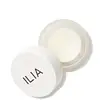What's inside
What's inside
 Key Ingredients
Key Ingredients

 Benefits
Benefits

 Concerns
Concerns

 Ingredients Side-by-side
Ingredients Side-by-side

Caprylic/Capric Triglyceride
MaskingHelianthus Annuus Seed Oil
EmollientCocos Nucifera Oil
MaskingHydrogenated Soy Polyglycerides
Skin ConditioningButyrospermum Parkii Butter
Skin ConditioningCaprylic/Capric Triglyceride, Helianthus Annuus Seed Oil, Cocos Nucifera Oil, Hydrogenated Soy Polyglycerides, Butyrospermum Parkii Butter, Silica, Behenyl Behenate, Persea Gratissima Oil, Glyceryl Behenate, Euphorbia Cerifera Wax, Polyhydroxystearic Acid, Aroma, C15-23 Alkane, Tocopheryl Acetate, Vitis Vinifera Seed Oil
Caprylic/Capric Triglyceride
MaskingMango Butter Dimer Dilinoleyl Esters/Dimer Dilinoleate Copolymer
EmollientCapryloyl Glycerin/Sebacic Acid Copolymer
Skin ConditioningBis-Diglyceryl Polyacyladipate-2
EmollientPolyglyceryl-10 Decaoleate
Skin ConditioningPolyglyceryl-10 Pentaoleate
EmulsifyingPolyglyceryl-10 Pentaisostearate
EmollientC10-18 Triglycerides
EmollientButyrospermum Parkii Butter
Skin ConditioningCera Alba
EmollientGlyceryl Stearate Se
EmulsifyingHydroxystearic Acid
CleansingAroma
Cocos Nucifera Oil
MaskingLactobacillus/Papaya Fruit Ferment Extract
AbrasiveSilica
AbrasivePolyhydroxystearic Acid
EmulsifyingRicinus Communis Seed Oil
MaskingCarica Papaya Seed Oil
HumectantSodium Hyaluronate
HumectantTocopherol
AntioxidantHydrogenated Castor Oil
EmollientStevia Rebaudiana Leaf/Stem Extract
MaskingGardenia Taitensis Flower Extract
Skin ConditioningSalicornia Herbacea Extract
Skin ConditioningUndaria Pinnatifida Extract
Skin ConditioningGeraniol
PerfumingLimonene
PerfumingLinalool
PerfumingCI 77891
Cosmetic ColorantCaprylic/Capric Triglyceride, Mango Butter Dimer Dilinoleyl Esters/Dimer Dilinoleate Copolymer, Capryloyl Glycerin/Sebacic Acid Copolymer, Bis-Diglyceryl Polyacyladipate-2, Polyglyceryl-10 Decaoleate, Polyglyceryl-10 Pentaoleate, Polyglyceryl-10 Pentaisostearate, C10-18 Triglycerides, Butyrospermum Parkii Butter, Cera Alba, Glyceryl Stearate Se, Hydroxystearic Acid, Aroma, Cocos Nucifera Oil, Lactobacillus/Papaya Fruit Ferment Extract, Silica, Polyhydroxystearic Acid, Ricinus Communis Seed Oil, Carica Papaya Seed Oil, Sodium Hyaluronate, Tocopherol, Hydrogenated Castor Oil, Stevia Rebaudiana Leaf/Stem Extract, Gardenia Taitensis Flower Extract, Salicornia Herbacea Extract, Undaria Pinnatifida Extract, Geraniol, Limonene, Linalool, CI 77891
 Reviews
Reviews

Ingredients Explained
These ingredients are found in both products.
Ingredients higher up in an ingredient list are typically present in a larger amount.
Aroma refers to an ingredient, or mixture of ingredients, that impart or mask a flavor.
The name is slightly confusing. This is because INCI associates aroma with flavor instead of smell.
Here is the official definition from the The International Cosmetic Ingredient Dictionary and Handbook:
“Aroma is a term for ingredient labeling used to identify that a product contains a material or combination of materials normally added to a cosmetic to produce or to mask a particular flavor.”
INCI shows the only purpose of aroma to be "flavouring".
However, due to regulation differences, some companies may use aroma in place of parfum.
In Canada, this ingredient only has to be listed in concentrations above 1%.
Learn more about AromaThis ingredient is also known as shea butter. It is an effective skin hydrator and emollient.
Emollients help soothe and soften your skin. It does this by creating a protective film on your skin. This barrier helps trap moisture and keeps your skin hydrated. Emollients may be effective at treating dry or itchy skin.
Shea butter is rich in antioxidants. Antioxidants help fight free-radicals, or molecules that may harm the body. It is also full of fatty acids including stearic acid and linoleic acid. These acids help replenish the skin and keep skin moisturized.
While Shea Butter has an SPF rating of about 3-4, it is not a sunscreen replacement.
Shea butter may not be fungal acne safe. We recommend speaking with a professional if you have any concerns.
Learn more about Butyrospermum Parkii ButterThis ingredient is an emollient, solvent, and texture enhancer. It is considered a skin-softener by helping the skin prevent moisture loss.
It helps thicken a product's formula and makes it easier to spread by dissolving clumping compounds.
Caprylic Triglyceride is made by combining glycerin with coconut oil, forming a clear liquid.
While there is an assumption Caprylic Triglyceride can clog pores due to it being derived from coconut oil, there is no research supporting this.
Learn more about Caprylic/Capric TriglycerideCocos Nucifera Oil is obtained from the kernels of the coconut fruit. In other words, this is coconut oil.
Coconut Oil is rich in fatty acids with lauric acid making up the majority of these. It also contains linoleic acid. Due to this high fatty acid content, coconut oil helps trap moisture and soften skin.
Despite being antibacterial, coconut oil may not be great for acne-prone skin. It is comedogenic and may clog pores. This ingredient may not be safe for malassezia or fungal acne.
Note: Coconut Oil should not replace your sunscreen for UV protection. Studies show it only blocks about 20% of UV.
This oil is non-volatile and has a light scent.
The term 'fragrance' is not regulated in many countries. In many cases, it is up to the brand to define this term. For instance, many brands choose to label themselves as "fragrance-free" because they are not using synthetic fragrances. However, their products may still contain ingredients such as essential oils that are considered a fragrance.
Learn more about Cocos Nucifera OilPolyhydroxystearic Acid is a soft wax made from castor oil.
It is is a texture thickener, emulsifier, and film-former. Emulsifiers prevent ingredients from separating, such as oils and waters.
Polyhydroxystearic Acid may not be fungal acne safe.
Learn more about Polyhydroxystearic AcidSilica, also known as silicon dioxide, is a naturally occurring mineral. It is used as a fine, spherical, and porous powder in cosmetics.
Though it has exfoliant properties, the function of silica varies depending on the product.
The unique structure of silica enhances the spreadability and adds smoothness, making it a great texture enhancer.
It is also used as an active carrier, emulsifier, and mattifier due to its ability to absorb excess oil.
In some products, tiny microneedles called spicules are made from silica or hydrolyzed sponge. When you rub them in, they lightly polish away dead skin layers and enhance the penetration of active ingredients.
Learn more about Silica